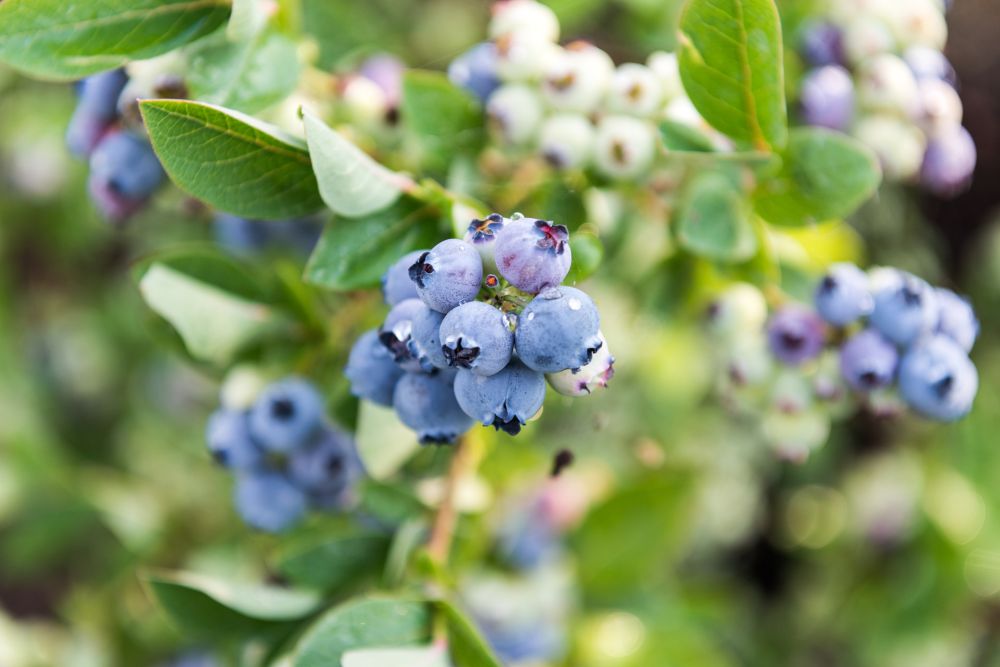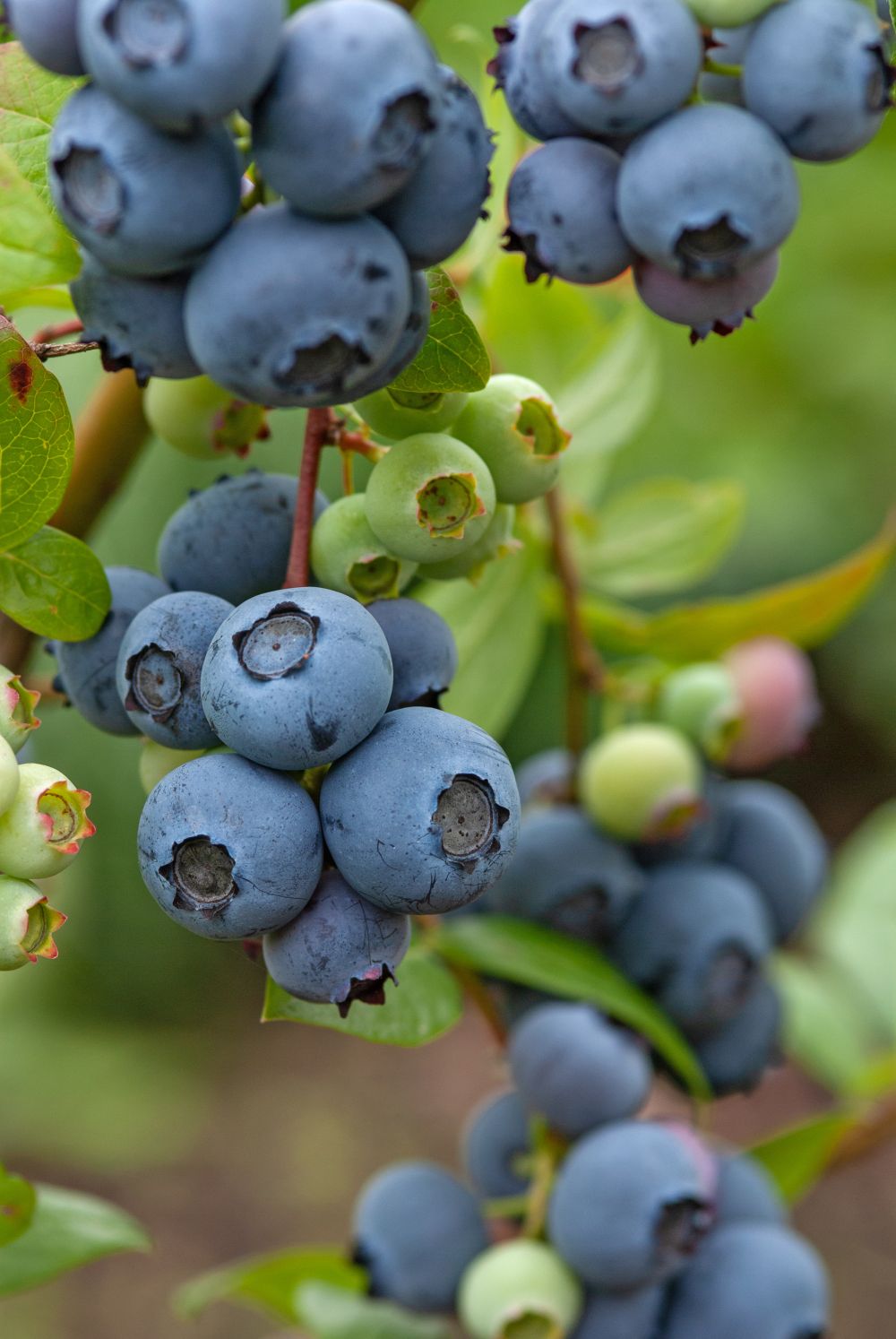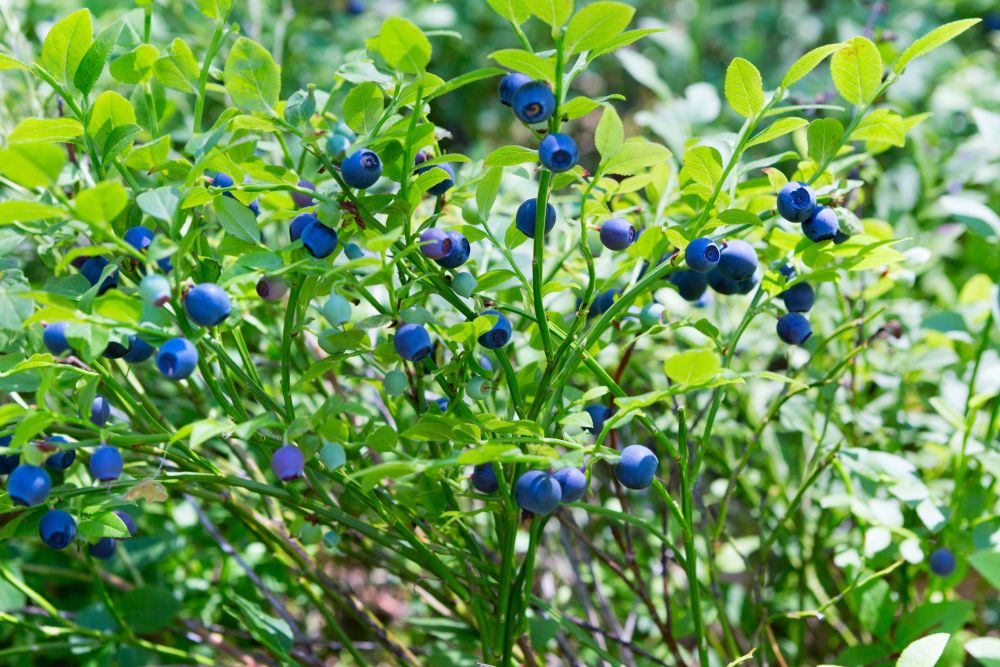Blueberries – How To Grow And Care For Blueberry Bushes
If like me you love blueberries, then you’d be interested to know they’re more than a bluish fruit with acidic flavors. These small berries are packed with antioxidants that cleanse the blood and prevent free radicals from clogging the heart and arteries. And if you’re like me and can’t get enough of those delicious fun-size berries, then the idea of planting blueberries in your garden must have crossed your mind. That way you’ll have enough supply of fresh blueberries to keep your heart from missing a beat.
Surprisingly blueberry bushes are easy to grow and have a high tolerance for different weather conditions. So it’s puzzling that you don’t see more blueberry bushes growing in gardens. Hopefully, after reading this article, you’ll be intrigued enough to add this healthy and tasty berry to your fruit garden.
Blueberries at a Glance
Native to North America, blueberries are in the same genus as huckleberries and cranberries. Europe only got its first taste of the slightly acidic berries in the first half of the 20th century. And with many varieties and cultivars, they vary in size wildly. Some varieties are only 4 inches tall while others grow to 13 feet high.
But whatever variety you grow, the berries follow the same pattern as they develop. At first, the berry is green until it reaches its full size. Then the color changes slowly into green pink and then blue pink before finally settling on the dark bluish color that distinguishes these berries. Then you know the berries are ripe and ready to harvest. The berries are usually covered with a white powdery substance that protects the skin. They also have a crown flare at the bottom which gives the soft flesh a crunchy texture.
You can start harvesting your ripe blueberries any time between May and August. Weather conditions as well as altitude impact the development of the berries. And since the blueberry bushes grow in zones 3 to 10, the time to harvest is different in every zone.
Highbush vs Lowbush Blueberries
Before we get to the blueberries and varieties and cultivars to choose from, we need to make a distinction between the major two types of blueberries highbush and lowbush.
- Highbush Blueberries (Vaccinium corymbosum): Although a perennial, this type is a deciduous bush. Most cultivated blueberry bushes belong to this type. The most distinguishing feature of this type is the red leaves that emerge in the spring. They later turn blue-green in the summer. Northern highbush varieties are cold tolerant and grow well in zones 4 to 7. Southern highbush species prefer warm weather and grow in zones 7 to 10. The berries are usually larger, albeit more acidic, than lowbush blueberries.
- Lowbush Blueberries (Vaccinium angustifolium): Also called wild blueberries is the type that grows in the wild without cultivation. It prefers cold weather and grows well in zones 3 to 7. Most varieties that belong to this type are on the short side and barely grow above one foot high. The fruits are sweeter than highbush blueberries although they’re smaller in size.
Blueberries Varieties
Depending on which zone you live in, you’ll need to pick a blueberry cultivar or variety that grows well in that weather. Lowbush blueberries for example will not grow well in warm zones since they need many days of chilled weather to become ripe. Here are the most popular blueberries varieties and which zones they are most suited to.
- Bluecrop: This Northern highbush variety grows well in zones 4 to 7. It reaches 6 feet when mature and spreads out about 4 feet wide. In the fall, the leaves and stems turn red which makes the tree look like it’s on fire. The fruits are sweet, medium-size, and resist cracking. As for the bloom season, the tree starts flowering in May and the fruits are ready to harvest in August.
- Blueray: Another Northern highbush that you can grow with other varieties of the same type to provide cross-pollination. Similar to Bluecrop, the tree turns scarlet in the fall. The tree tends to produce a lot of berries every season, so you’ll need to thin them out to conserve the tree’s energies and ease the stress of the extra weight.
- Brightwell: This cultivar is suitable for zones 6 to 9 and it grows to about 10 feet tall. A very productive cultivar and you won’t need to grow more than two to cross-pollinate. You’ll need to plant it in a sunny spot since it favors full sun over partial shade. It also has a high tolerance for the occasional cold spell.
How to Grow Blueberries
Although you can start blueberries from seeds, we have seen anyone who tried that feat and was happy to talk about it. Not just because the seeds are tiny, hard to extract, and not easy to germinate. The bushes that grow out of seeds, especially cultivars, also tend to be different from their parents. So to be on the safe side, you should get a sapling from your local nursery. At least that way you’ll know that the cultivar you purchased is suitable for your zone.
- The best time to start your blueberry bush is either in the spring or fall. Cold or frigid soil will not encourage the sapling to grow nor will waterlogged soil.
- Choose a sheltered spot in your garden that is protected from strong winds but gets the full sun. Winds could wreak havoc on the flowers and cause the berries to crack.
- Water the sapling you bought before transplanting it.
- Dig a hole in the soil about the height of the rootball and twice as wide.
- Add slow-release aged manure or bone meal to the bottom of the hole and sprinkle some water to get it moist.
- Ease the sapling out of the container or burlap it came in. Examine the roots carefully and ruffle them to spread them out.
- Ease the sapling into the hole and make sure the roots fill up the hole and the soil line on the stalk aligns with the surface of the hole.
- Fill the hole with soil and firm it to push out air pockets and keep the sapling standing on its own.
- Water the soil to get it moist.
Blueberries Care
Hardy and easy to grow blueberries are not picky about the type of soil your plant it in. At least that’s what the blueberry bushes would have you understand. But if you want to get a good yield and delicious berries out of them year after year, then you’ll need to go out of your way to provide the best growing conditions for these berries.
Soil
The first clue that blueberries are a little too demanding that one thinks, is in the soil. While most plants, bushes, and trees prefer neutral to slightly acidic soil, blueberry bushes prefer highly acidic soil. We’re talking about levels of acidity between 4.0 to 5.2 which other plants will simply shrivel and wither away in. This is why you need to add bone meal to the soil before you lower the young bush into the hole for the first time. So if you have clay soil in your garden, consider building a mound, mix in as much organic materials as you can spare, and plant the bush there. And to achieve the right levels of acidity, add garden sulfur sparingly while testing the soil pH repeatedly.
Water
That’s another aspect where blueberries need special treatment. The blueberry bush is a thirsty plant that needs plenty of water. More so during the hot summer months and where you don’t get much rainfall. On average you need to give the bush about 2 inches of water a week. That’s 32 gallons of water. Since the root system of the blueberry bush is rather shallow, it gets most of the moisture out of the top few inches of the soil. When you water the bush, aim low toward the roots and give it a good soaking. If the soil dries out fast because of the high temperature or the soil type, then you’ll need to water the bush again before the top 3 inches of soil become dry. Drought has a negative impact on the taste and flavors of the berries.
Fertilizer
A heavy-feeder, blueberries have their own specific type of food supplement called blueberry food. It’s a special fertilizer designed for acid-loving plants. You can also use azalea fertilizer to feed these bushes. You’ll need to start applying the fertilizer before the growing season and keep it up once every 2 to 3 weeks. Once the berries have turned blue, hold off the fertilizer. Don’t fertilize your bushes if they are deciduous and have shed off their leaves.
Pruning
The main difference between a blueberry bush growing in the wild and one growing in the garden is how well-manicured that latter is. But pruning your blueberries is not just about giving them an appealing look, it’s also about improving the yield and taste of the berries. This is especially true if the cultivar you grow tends to be very productive. You’ll need to prune the bush to ease its burden and help it focus its energies on high-quality berries rather than large quantities of them.
Start off by trimming off any flowers that appear in the first couple of years of the bush’s life. This encourages the blueberry to grow bushier and sturdier. Then you can start doing regular pruning when the bush reaches its fourth year. But this time you’ll focus on the branches rather than the flowers. The best time to prune the blueberry bush is in the early spring before the growing cycle. Try to open up the bush to allow the inner branches to get sunlight and improve airflow.
Pests and Diseases
The common pests that attack your blueberries are plum curculio, cranberry fruit worm, blueberry tip borer, and cherry fruit worm. They go after everything from leaves to berries and even roots. Keep on the lookout for telltale signs of infestation such as holes in the leaves, wilting branches, and damaged berries.
As for diseases, you also need to combat powdery mildew and leaf spot. Both are fungal diseases caused by poor airflow and high levels of humidity around the blueberry bush. Look for cultivars that are resistant to these diseases.
But the highest danger to your blueberries is birds. They feed on the berries at all levels of ripeness and cause great loss to your yield if you let them land on the bush. Experts recommend using nets to protect the bushes or installing advanced bird repellent systems.



